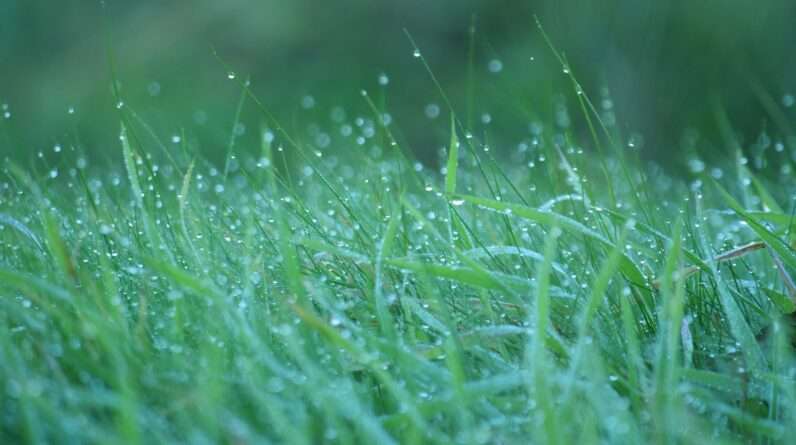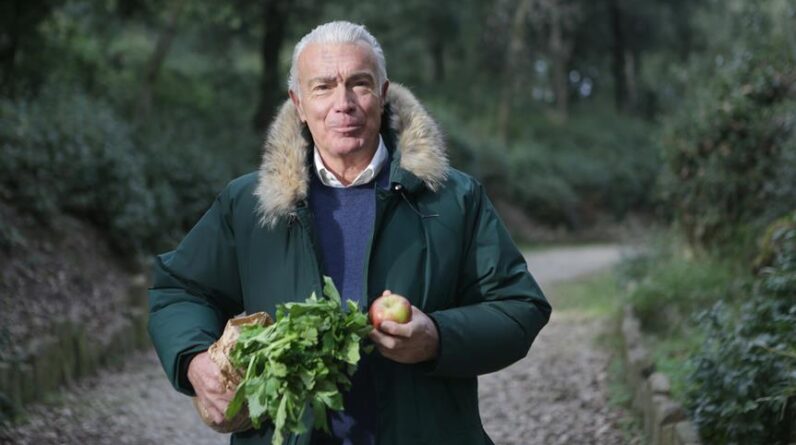
Imagine stepping outside and being greeted by a lush, vibrant green lawn that stands out among the dull, lifeless yards of your neighbors. With our comprehensive guide to fall lawn care, you can achieve just that.
By raking and removing leaves, fertilizing for winter resilience, aerating for improved soil health, and protecting your lawn from winter damage, you'll have the knowledge and tools needed to master the art of maintaining a beautiful, envy-inducing lawn all year round.
Key Takeaways
- Regular raking prevents thatch formation and maintains a healthy lawn.
- Overseeding with new grass seed promotes a thicker turf and fills in bare patches.
- Proper mowing techniques encourage strong root growth and reduce the risk of diseases.
- Applying winter fertilizer ensures a lush and green lawn in the upcoming season.
The Importance of Fall Lawn Care
You should prioritize raking leaves regularly to maintain a healthy lawn during the fall season. This task is crucial because leaves can block sunlight and hinder air circulation, leading to the growth of fungi and diseases.
Regular raking also prevents the formation of thatch, a layer of dead grass and debris that can suffocate your lawn.
Another important aspect of fall lawn care is overseeding. By spreading new grass seed over your existing lawn, you can fill in bare patches and promote a thicker, lusher turf.
Additionally, proper mowing techniques play a significant role in maintaining a healthy lawn. Cutting your grass to the recommended height and using sharp blades will encourage strong root growth and reduce the risk of diseases.
Prioritizing these tasks will ensure that your lawn thrives during the fall season.
Raking and Removing Leaves
To maintain a healthy lawn during the fall season, it's important to regularly rake and remove leaves, as they can block sunlight and hinder air circulation. Leaves left on the lawn can also create an environment for pests and diseases to thrive.
However, instead of disposing of the leaves, you can consider mulching or composting them. Mulching leaves involves running a lawn mower over them, which chops them into small pieces. These small leaf particles then act as a natural fertilizer, as they break down and release nutrients back into the soil.
Composting leaves involves collecting them in a compost bin or pile, along with other organic materials like grass clippings and kitchen scraps. Over time, the leaves will decompose and turn into nutrient-rich compost that can be used to enrich your soil.
Fertilizing for Winter Resilience
Make sure to apply a winter fertilizer to your lawn for increased resilience during the colder months. Winter fertilization is essential in maintaining the health and vigor of your grass, ensuring a lush and green lawn come springtime. When choosing the best lawn fertilizers for winter, opt for those with a high nitrogen content, as this nutrient promotes strong root development and helps the grass withstand the harsh winter conditions. Look for fertilizers specifically designed for winter use, as they often contain slow-release nitrogen, which provides a steady supply of nutrients throughout the season. Applying the fertilizer in late fall, before the first frost, allows the nutrients to penetrate the soil and be readily available for your grass when it needs them most. By providing your lawn with the proper winter fertilization, you're setting the foundation for a healthy and vibrant lawn in the upcoming season.
Transitioning into the subsequent section about 'aerating for improved soil health', it's important to note that while winter fertilization is crucial, it can be further enhanced by aerating your lawn. Aerating involves creating small holes in the soil to alleviate compaction and improve air and water penetration. This process helps to enhance the effectiveness of the winter fertilizer by allowing it to reach the grassroots more effectively. Additionally, aerating improves soil health by stimulating root growth, reducing thatch buildup, and promoting the breakdown of organic matter. By combining winter fertilization with regular aeration, you can ensure that your lawn remains resilient and healthy throughout the winter months and beyond.
Aerating for Improved Soil Health
Start by understanding the benefits of aerating for improved soil health. Aerating your lawn involves creating small holes in the soil to allow for better air, water, and nutrient penetration. This process helps in improving drainage and preventing thatch buildup. By aerating your lawn, you can promote healthy root growth, enhance nutrient uptake, and prevent waterlogging, which can lead to root rot. Additionally, aerating helps break up compacted soil, allowing roots to spread and grow deeper. To further understand the benefits, refer to the table below:
| Benefits of Aerating | |
|---|---|
| Improves Drainage | Prevents Thatch |
| Breaks Up Compacted Soil | Promotes Root Growth |
| Enhances Nutrient Uptake | Prevents Waterlogging |
Incorporating regular lawn aeration into your fall lawn care routine can significantly improve the overall health and appearance of your lawn.
Protecting Your Lawn From Winter Damage
You can prevent winter damage to your lawn by taking proper precautions, such as applying a layer of mulch. Winter lawn protection is essential for maintaining a healthy, vibrant lawn all year round.
Here are some tips to help you protect your lawn during the cold winter months:
- Clear the lawn: Remove any debris, such as fallen leaves, before the first snowfall. This will prevent the accumulation of moisture and reduce the risk of snow mold.
- Mow low: Before winter sets in, lower your lawn mower's cutting height to around 2 inches. This helps prevent snow mold by allowing air and sunlight to reach the grass blades.
- Rake regularly: Regularly rake your lawn during the winter to remove any snow mold that may have formed. This will help prevent the spread of the disease and promote healthier grass growth.
Frequently Asked Questions
How Often Should I Mow My Lawn During the Fall Season?
To maintain a healthy lawn during fall, mow it regularly. The mowing frequency depends on factors such as grass growth rate, weather conditions, and desired height. Proper lawn maintenance requires knowing when to mow.
Can I Leave the Leaves on My Lawn to Decompose Naturally Instead of Raking Them?
You may be tempted to leave the leaves on your lawn for natural decomposition, but it's important to rake them. Leaving leaves can suffocate your grass, leading to bare patches and unhealthy growth.
Is It Necessary to Fertilize My Lawn in the Fall if I Fertilized It in the Summer?
You should still fertilize your lawn in the fall, even if you did so in the summer. Fall fertilization provides essential nutrients for root growth and helps your lawn withstand winter stress. There are alternative methods, but fertilization has its benefits.
What Is the Best Method for Aerating My Lawn, and How Often Should I Do It?
To achieve a lush green lawn, you'll want to aerate it regularly. The best method for aerating is to use a core aerator, and you should aim to do it at least once a year.
Should I Cover My Lawn With a Protective Layer During the Winter Months to Prevent Damage?
To keep your lawn safe from winter's harsh touch, it's wise to cover it with a protective layer. This shield offers benefits like insulation and prevents damage, ensuring your grass stays healthy and green.












